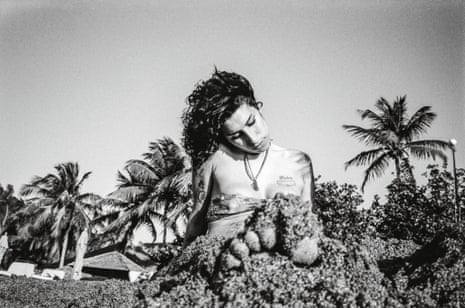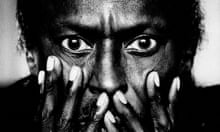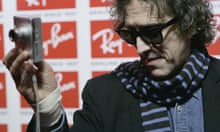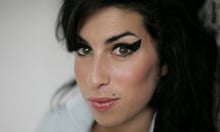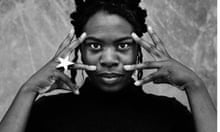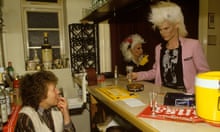For Amy Winehouse, 2008 was a year of extreme highs and confounding lows – business as usual, in other words, but even more so. The zenith came in February, when the 24-year-old singer dominated the Grammys with five wins, a record for a British woman. She couldn’t be in the US, because of visa complications, but when Tony Bennett, one of her heroes, announced Rehab as record of the year – beating Beyoncé, the Foo Fighters, Rihanna and Jay-Z, and Justin Timberlake – she was shown, by satellite linkup to London, staring straight ahead, mouth agape, briefly speechless.
But there were many profoundly distressing episodes, too. Throughout the year, Winehouse battled her addictions to alcohol, crack and heroin, while a gleeful tabloid press documented every tumble from the wagon. Her live shows could descend into chaos and she was roundly booed at both V Festival and Bestival that summer.
Blake Wood, then a 22-year-old proto-photographer from Vermont newly arrived in London, met Winehouse in early January 2008. They were introduced by their mutual friend Kelly Osbourne and quickly became inseparable – in red-top parlance, he was “Good Blake”, in contrast to Winehouse’s husband, Blake Fielder-Civil, who had not long been jailed for attempting to pervert the course of justice, though her relationship with Wood was always platonic (he eventually took legal steps to correct false reporting).
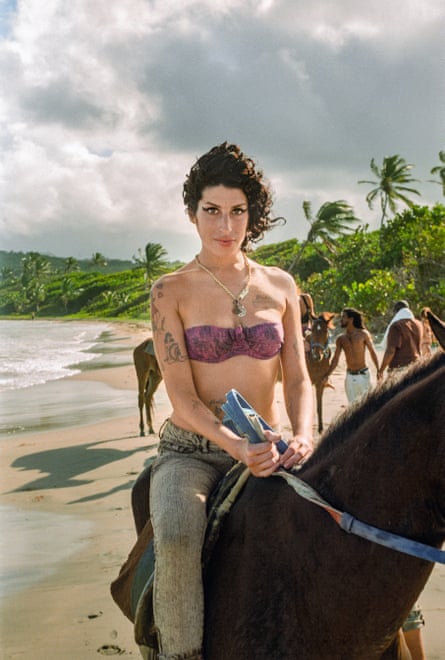
Their friendship deepened and, on Winehouse’s invitation, Wood began taking informal photographs. After her death in 2011, he could scarcely bring himself to look at them, but now he feels the time is right for a different, more nuanced narrative of that surreal period. “A big reason I wanted to put this out there was to change the conversation about her,” Wood says of his new book, Amy Winehouse, a collection of 150 mostly unseen images, taken in locations from Camden to Paris to St Lucia, in 2008-09. “There’s a false idea that it was all bad during those years and it really wasn’t – I was there.”
Wood, on the phone from New York, where he now lives, goes on: “This book, really it’s a love letter to a friend. And it’s a visual diary of us at the time when she was most celebrated by the world, but she was also really misunderstood. She was very much loved by the people around her, and I hope this comes through the work.”
Certainly the photographs present a contrasting image of Winehouse from the one that filled the newspapers at the time, or from that of the doomed, self-destructive naïve from Asif Kapadia’s Oscar-winning documentary Amy. Wood says that he wanted to capture “the person, not the persona”. In many of the images she has her natural curly hair rather than the extreme beehive we are used to. The book is dominated by an extended holiday that Winehouse took to St Lucia at the end of 2008, which Wood joined her on for almost four months. Winehouse looks natural and healthy as she rides horses on the beach or exercises on a trapeze, and she appears totally at ease with Wood snapping away on Polaroid and old point-and-shoot cameras that he’d brought on the trip.
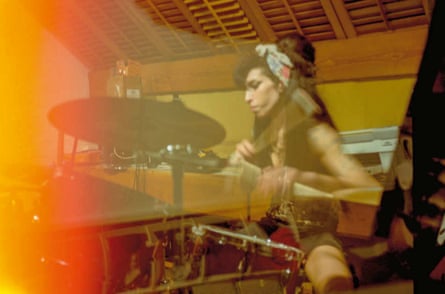
By the time of the St Lucia holiday, Wood insists, Winehouse was done with hard drugs, but she was still drinking. Either way, Wood – who grew up around addiction but has always been straight-edge himself – didn’t want to document that aspect of her life. “It was this unwelcome friend she’d go deal with and then come back and we’d hang out,” he says. “I just had no interest in taking bad photos of her. Why take a photo of someone who’s struggling? As a society we’ve captured that, we’ve seen that, at least from my perspective. But maybe not. Maybe other people need to connect to that visually and they need to see it more. But for me, I’m good.”
Before St Lucia, much of the time that Winehouse and Wood spent together was housebound, hiding from the paparazzi. They would watch TV, talk about their lives, sketch out their creative dreams; once they made pillowcases from vintage T-shirts. “We were both outsiders and we connected on that,” says Wood. “When you grow up feeling like that, you don’t feel like you belong, that definitely brought us close.” Winehouse pushed Wood to do photography and it was her encouragement that led him to leave St Lucia and return to the States to pursue it professionally. “She really believed in my work,” he says. “She saw my abilities before I saw any of it. I didn’t really know if I was shit or not. But she pushed me to make work and it was really nice to have a friend like that.”
When asked to pick a special memory from their time together, Wood selects the night of the Grammys, and the gathering of friends and family at the Riverside Studios, west London. There’s even been a suggestion that when Winehouse finally found her voice and made a speech – “To my mum and dad. To my Blake, my Blake incarcerated” – she was talking about Wood first and Fielder-Civil second.

“I didn’t talk to her about it after, but you can jump to that conclusion if you like,” he says. “But when she won, it was the first time in my life I really cried from joy. Seeing somebody being able to experience recognition sober, they really deserve it, and to be able to really feel it. Just to see her whole family and how proud of her they were, to bear witness to that moment was really big. As much as it was televised and public, it was very intimate that night. It was almost like her own private ceremony.”
Amy Winehouse by Blake Wood is published by Taschen on 27 July (£30). To order it for £25 go to guardian bookshop.com or call 0330 333 6846. Free UK p&p over £10, online orders only. Phone orders min p&p of £1.99.
